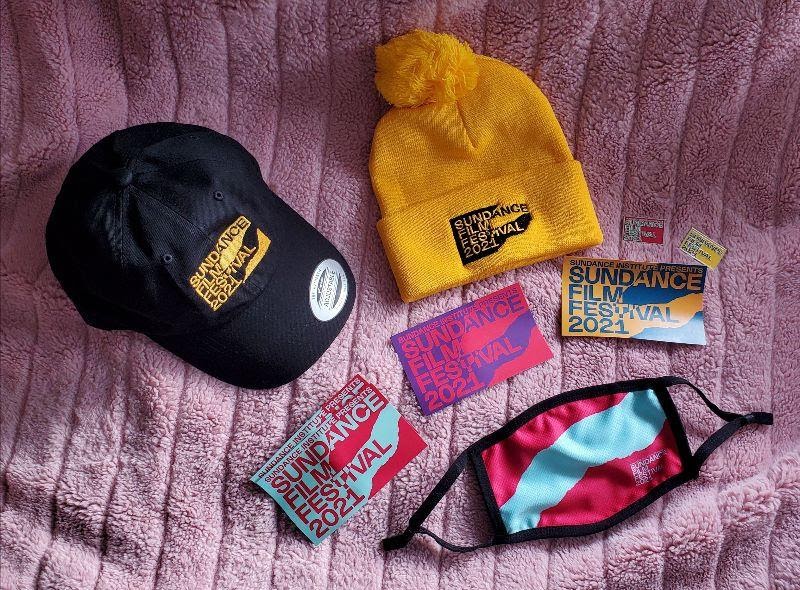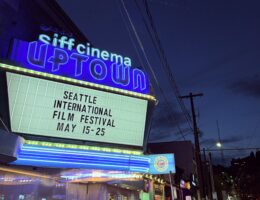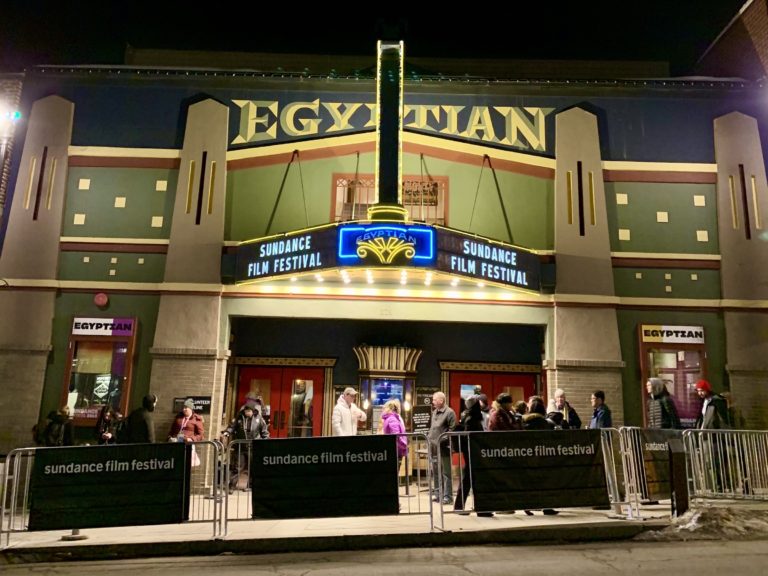In a “normal” year (whatever that means), this is about the time of year when filmmakers, producers, celebrities, artists, journalists, and fans of independent cinema would be shoving their warmest winter gear into a suitcase and making their way to the mountains of Utah for the annual Sundance Film Festival. This year, though, a virus had other ideas and the organizers of Sundance made a major transition to a mostly virtual format.
As much as this sucks for everyone who loves being in the company of other living humans, wandering the real world of quaint ski village main streets, and packing together into spaces that aren’t their own living rooms, it’s quietly a boon for the legions of film lovers who otherwise couldn’t have swung a mid-winter vacation to Park City, let alone navigating all the hoops of getting passes, tickets, or invites to events. In what’s a kind of tiny silver lining amidst all the pain and suffering, this dreadful coronavirus has democratized one of the biggest annual film events such that almost anyone in the US can relatively easily get themselves online, see what looks good, grab a ticket, and experience the bustling world of independent film.
Opening night is Thursday January 28th, launching a week of premiere and encore screenings through February 3rd.
Tickets and Other Practical Matters
- The folks in Park City are doing their best to maintain the feeling of a living breathing film festival rather than a big online video library; so be aware that all of the screenings are limited in terms of both time and audience in some slightly quirky ways.
- In brief, each film at Sundance has two “screenings” — the first is a “premiere screening” in which the film is available during a three-hour window. These showings require you to be on time and include some bells and whistles like an interactive waiting room where you can hang out with other moviegoers and make small talk, almost as if you were huddled against the brisk chill of a high altitude winter waiting to get inside for the big show. Premieres also feature live post-screening Q&As with the filmmakers and talent so budget time to stick around to hear some awkward questions (or even ask one yourself).
- Alternatively, if you just want to watch some new indie movies and need some flexibility, you can grab a ticket for the film’s “second screening”. This gives you a 24 hour block to find time in your day to watch the movie and also has the advantage of allowing you to swoop in and catch movies that had buzzworthy premieres. These second screenings generally roll out 48 hours after the premiere. (Or one day after, for the two films whose premiere is on Feb 2.)
- Then, on Feb 3rd, all the fest’s award winners will each enjoy a further day of on-demand encore screenings, alongside the regular second screenings of Feb 1st and 2nd’s premieres. It’s kind of complicated, but the festival website and interactive program make it relatively easy to plot out a schedule for yourself.
- A wide range of talks and events run parallel to the film program. There’s also a virtual main street, where sponsors that used to lure in guests with free snacks are opening their digital doors with satellite programs and incentives in place of swag. Make some time to browse around and be surprised by what’s going on.
- Passes providing all-access to the program have sold out, but individual tickets are still available for a lot of films, particularly encore screenings later in the week. They run $15 each and guarantee that you’ll have a “spot” at that film’s showing.
- Hot tip: for young viewers aged 18-25, there’s a 50% discount available using the promo code “INPUBLICMSZX”. Make sure to complete your profile on your account before checking out, including putting in your birth year.
Sundance Goes Virtually Local

Above, we said that Sundance was mostly virtual. However, in some states that are either less ravaged by the pandemic, more flexible with guidelines, or experiencing weather that’s more amenable to things like outdoor screenings, Sundance has partnered with mission-driven arthouse cinemas and pop-ups to present in-person screenings. Seattle is not one of those places. However, our own Northwest Film Forum is on board as a sort of Satellite Venues, even though our current phase of lockdown means that events aren’t happening in the physical theater. Instead, NWFF will be hosting four virtual conversations and panels on Zoom:
- Our Right to Gaze: Models for BIPOC & LGBTQ+ Empowerment in Film
- Family Histories: Archival Explorations in Personal Documentary Filmmaking
- Future-Minded: Youth Activist in Conversation with Peter Nicks, Director/Producer of Homeroom
- Grantmakers in Film
These talks are available on demand anytime during the festival (Jan 28-Feb 3) and are open to the public, closed-captioned, and priced on a pay-what-you-can sliding scale from $0–25. They’re also advertising that “anyone who registers for a NWFF Sundance panel for $5 or more will be eligible to receive a schwag item on first-come, first-served basis!”, which represents a substantial discount over the official festival merch store and another incentive to support NWFF.
As an additional perk, NWFF members can email exec director Vivian Hua for a discount code to purchase tickets to Sundance virtual screenings.
Mini Roundtable: the Sunbreak “goes” to Sundance
Josh: What’s your previous experience with Sundance?
Jenn: I’ve been a seasonal film festival worker for the last 6 years or so (SIFF, North Bend, Palm Springs, NIGHTSTREAM), and working Sundance is kind of the Super Bowl of that field in the US. I’ve never been able to make the trip work for me logistically, but it’s long been a dream of mine to get there, and I’m always so jealous watching so many of my festival-nomad friends wrangling lines and talking into radios in photos from Park City. (A few times they’ve even brought me back some merch or a fest catalogue – both a thoughtful kindness and an agonizing tease!) Someday, maybe. Anyway this is my first actual dip into “attending” this fest so I’m very excited about it!
Josh: I’ve only been to Sundance IRL one time when a friend and I split a long weekend between Salt Lake City and Park City. That time, we got a neat little pass that covered all of the weekend screenings at the biggest venue in SLC, so that served as a nice sampler and a baseline guarantee that we’d have options for seeing some of the festival’s anticipated crowd-pleasers. We supplemented our passes with a couple of nights in the mountains where we aggressively refreshed the app to score individual tickets or spots on the wait lists for films that looked good / were playing close enough to our condo. As much as it felt chaotic and uncertain, the fixed amount of time, limited availability, and need to make geography-based choices is part of what makes a film festival so much fun.
How are you planning to dive into the virtual edition?
Jenn: I actually also bought a Fire TV Stick with some holiday gift card bounty, specifically in order to try and make this fest experience go as smoothly as possible (they will have an app for that but not Roku which is my usual streaming device, and streaming straight from web pages generally does not go well for me). The Fire TV app doesn’t launch til the fest starts on Thurs, so that’s a fun nail biter to hope everything works. Fingers crossed that goes alright!
Josh: This year, I got a standard pass, which let me reserve a spot for up to one film per “premiere block”, plus a limited number of encore screenings. So right when the window opened, I went through and started making a loose viewing plan. Yet even with the convenience of watching at home, somehow I’m more worried about making the most of it. There’s something about the scramble of an in-person event to motivate decision-making — at home, the possibilities for distraction and analysis-paralysis over all the choices is real.
What are you looking forward to from this year’s program?
Josh: There’s a ton to see, but given the necessity to make reservations to get the most out of my pass, I have something of a schedule lined up, subject to change. A few that I’m especially stoked about are:
- How It Ends seems like a good way to ease into the festival with some light pre-apocalyptic comedy that finds Zoe Lister-Jones making her way across Los Angeles to attend one last party with the likes of Helen Hunt, Olivia Wilde, Fred Armisen, Lamorne Morris, and Nick Kroll before an asteroid puts the whole planet out of its misery. It may be an indication of the ennui of the last year that this kind of nihilism sounds kind of fun.
- Misha and the Wolves looks like one of those jaw-dropping stranger-than-fiction documentaries: an orphan who survives the Holocaust by living in the woods with actual wolves, writes a blockbuster memoir, and is met with swirling controversy as layers of truth and fabrication are peeled away. No spoilers, please!
- The World to Come among the few non-premieres, Mona Fastvold’s adaptation of Jim Shepard’s 2017 short story made a splash at last year’s Venice Film Festival. Charting an illicit affair in eighteenth century upstate New York, the film is extremely on-trend in terms of subject matter (period lesbian romance) and cast (the mundane established couple are played by Katherine Waterston and Casey Affleck; the new-to-town pair by suddenly-ascendent Vanessa Kirby and seemingly-everywhere Christopher Abbott). Feels like one of the movies that would’ve had a major red carpet, instead we’ll have to watch the arrivals on our Zooms.
- I should also mention that Judas and the Black Messiah was a high profile late-breaking addition to the program. Even though it’ll see wide release soon after its premiere, you get the sense that it’s hoping to leverage festival attention to make a case for itself in the Covid-extended Oscar season. Might be worth the price of admission just to catch the Q&As.
Jenn: I bought a handful of individual tickets, a mix of some premieres and some encore screenings, a few that I’m looking forward to are:
- Cryptozoo: I absolutely loved graphic novelist Dash Shaw’s radically weird and wonderful 2016 feature film debut, My Entire High School Sinking Into the Sea. Could not be more excited for his follow-up, featuring the voice talents of Jason Schwartzman, Grace Zabriskie, Michael Cera, Lake Bell, Zoe Kazan and more.
- On the Count of Three: I think a lot of us are on a Christopher Abbott high after Possessor; this co-starring vehicle for him about a suicide pact between best friends alongside Jerrod Carmichael, who’s also the film’s director and has been previously best known as a stand-up comic and co-creator/star of The Carmichael Show, looks to be something special.
- Strawberry Mansion: a potential dystopian mind-bender from co-writer/director/star Kentucker Audley, who was last seen in Amy Seimetz’s superb She Dies Tomorrow. (With a score by Dan Deacon!)
Josh: I have a few of those on my list, too! Let’s hope that our apps don’t fail us (thanks for the reminder to download the AppleTV app) and that we can reconvene after the festival to share our highlights and discuss how the virtual festival experience held up.



